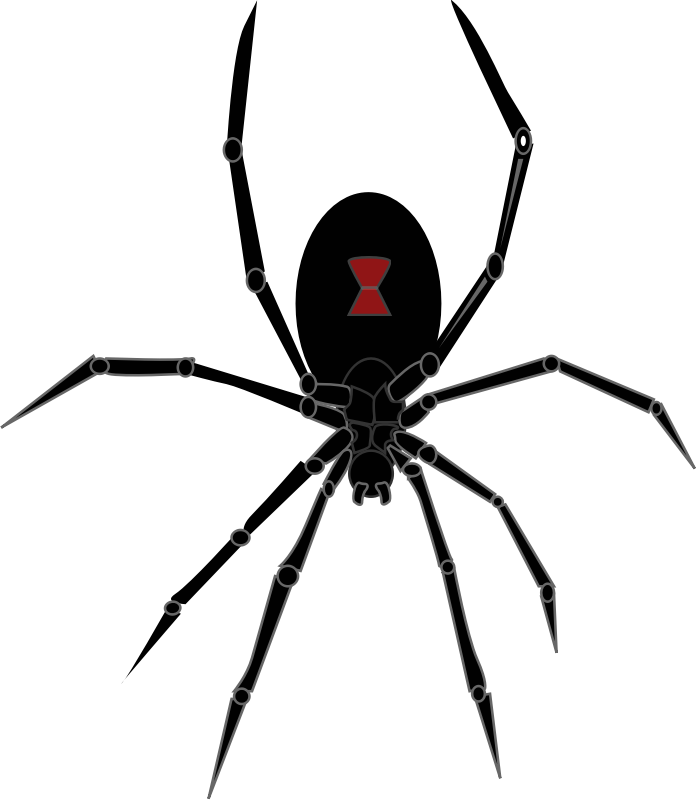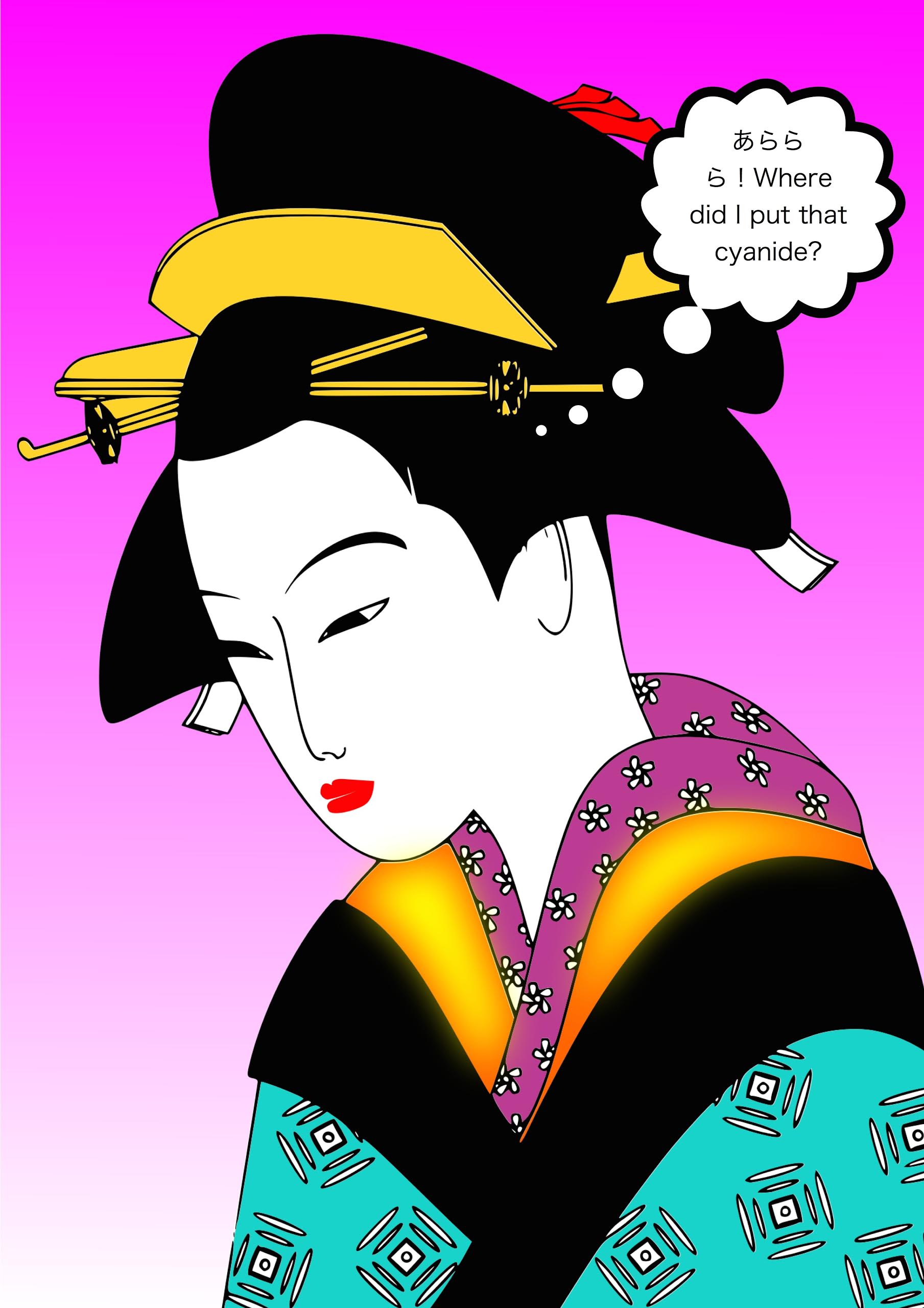by Kaori Shoji
Wow. What a year THAT was, on a whole lot of levels. The unofficial diagnosis is that things will get worse in the year of the sheep, but let’s put that aside for now. A thought to mull over: 2014 was the year the crime rate among senior citizens multiplied by 46 times, and the image of the Japanese Woman – long ranked among the most demure, sensible and persevering humans on the planet – was shattered to smithereens. Now even the heroine of NHK’s trademark morning drama is imported from the US and the tall, blonde “Ellie” represents all that her dark-haired Japanese sisters apparently lost forever: stuff like dedication, endurance, sympathy and a willingness to toil for husband and family. Aw shucks.
Instead, the Japanese Woman is showing aspects of herself that are new, more interesting and often sh*t scary. The Japanese have a traditional name for these femme fatales: dokufu (poisonous women), who end up contaminating and/or destroying the lives of people around her. Novelist Natsuki Kirino once told me that “the women of Japan had been slaves for so long, the wounds of hurt and resentment have festered through generations, passed on from mother to daughter. At their core, Japanese women are capable of incredible acts of cruelty, deception, and violence.” Coming from one of the nation’s most prominent crime writers, famed for fantastically violent stories with women as the culprits, her words carried the weight of truth. Behold, the cast of dokufu who made 2014 a year to remember:
1) Haruko Obokata
She kicked in the year with a bang and has now made her exit, leaving behind a famed press conference statement of “STAP cells DO exist!” – in an adorable, little girl voice. That line was officially nominated for the most fashionable phrase of 2014. The former Harvard University research scientist lead her team in Riken Laboratories to discover and develop the STAP (Stimulus Triggered Acquisition of Pluripotency) cell. When deployed, this had the potential to revolutionize stem cell technology. However, Obokata’s paper was disproved in January by “Nature” magazine and 3 months later, Riken concluded she had falsified the data. The golden girl’s fall from grace was swift and hard, compounded by the fact that she had no supporters in sci-tech academia. Rather, Obokata was criticized (especially by women) for being 1) too cute 2) wallpapering her office in pink and 3) showing up at press conferences in Vivienne Westwood dresses. Her supervisor Yoshiki Sasai who co-authored the STAP cell paper, hanged himself in Riken’s laboratory in August, by way of a public apology. Obokata is still an employee there, though her personal lab was shut down along with 200 others, and hundreds of employees were laid off.
2) Ayaka Shiomura
This would have been an open-shut case of sexual harassment (one among many) inside the intricate, mysoginist network of the Japanese political world, but it wasn’t that simple. In June, during a Metropolitan Assembly meeting, Assemblywoman Ayaka Shiomura accused an anonymous male voice, who yelled out jibes to the tune of “Can’t you have kids? What’s wrong with you?,” of rampant sexual harassment. Later, LDP member/Assemblyman Akihiro Suzuki came forward to fess up that the voice was his, and publicly apologized to Shiomura and Tokyo voters. He later resigned. For a brief while, Shiomura became a political heroine and shining advocate of the rights of female public figures. But in a matter of days, her past was exposed: a former swimsuit model and actress who also frequented host clubs. She was also rapped over the knuckles for several unfortunate statements (made on TV) regarding past lovers and how she billed them for terminating the relationship. The highest fee she got was 150,000 yen. After that her popularity plummeted, but she has kept her political position. Akihiro Suzuki on the other hand, disappeared into the ether.
3) The Sasebo Murder by a 16-year old girl
 This case sent shockwaves through the nation and temporarily labeled Sasebo in Nagasaki as the city of child-murderers. This 16-year old girl – on the school blacklisst ever since she tried to poison her classmate’s lunch several years ago – was found guilty of first strangling, and then dismembering the body of a friend who came over to her apartment. Sasebo has had similar incidents in the past, most prominently the 2004 murder of a 12-year old girl by her girl friend, which happened inside the school building with a box cutter. Minutes after the deed, the friend calmly attended homeroom.
This case sent shockwaves through the nation and temporarily labeled Sasebo in Nagasaki as the city of child-murderers. This 16-year old girl – on the school blacklisst ever since she tried to poison her classmate’s lunch several years ago – was found guilty of first strangling, and then dismembering the body of a friend who came over to her apartment. Sasebo has had similar incidents in the past, most prominently the 2004 murder of a 12-year old girl by her girl friend, which happened inside the school building with a box cutter. Minutes after the deed, the friend calmly attended homeroom.
Ironically, the mother of the most recent Sasebo murderess had been on the city’s PTA board and worked to stamp out juvenile delinquency. Apparently mom had been close to her daughter, but her death in 2012 unhinged the girl. The father quickly remarried and enraged by his coldness, the girl tried to club him to death. He arranged for his daughter to live in her own apartment, and paid for her therapy sessions. After the girl was tried and convicted, the father committed suicide to “apologize for causing such sorrow on the family of my daughter’s victim,” as written on his suicide note.
4) Akane Irisawa
Two years back, Akane Irisawa (then twenty years old) was on trial for setting fire to the futon of an 85-year old woman and burning her to death. Irisawa had been working as caretaker at a facility for elderlies in Hiroshima, and the victim had been a patient. Police arrested her on the strength of a confession, which she later denied. Irisawa did, however, admit to taking the patient’s wallet and pocketing the contents, even as the patient was burning inside the futon covers. In July, the Hiroshima court decided on a verdict of not guilty and Irisawa went free, triggering Net supporters to dub her as the “cutest, sexiest arsonist ever.” Irisawa is now a Net idol, and her bikini photos went viral. The relatives of the victim however, call her “the devil” and are suing the facility for gross negligence.
5) Chisako Kakei
Sixty-eight year old Chisako Kakei isn’t glamorous and she certainly doesn’t have the Black Widow allure. Still, she has managed to marry four times and bury every one of her husbands, making, um, a killing (sorry) on each death. She has also been engaged to three or more men, all of whom landed in early graves, appointing her as the main benefactor to whatever financial assets they owned. Up to now, she had been questioned by the police but never convicted. But in December, husband no. 4 kicked the bucket and the police found traces of cyanide in his stomach and from an empty vial in the trash bin – apparently, Kakei had been a tad too sloppy this time.
How did she get her men? Kakei searched for prey in the nation’s numerous marriage and matchmaking agencies, and she was never without an older man willing to write off his fortune to her, thereby sealing his fate. Interestingly, older Japanese men are much more marriage-minded than women, because right on the day of her last husband’s funeral, Kakei was already slotting eligible men into her “date calendar,” all of whom were literally dying to tie the knot. Kakei’s total savings are rumored to be anywhere between 12 and 15 million yen.

That was pretty poorly written and over the top tabloid nonsense. Are you guys even trying to report credibly nowadays? There’s a fine line between reporting on Japan’s dark side and becoming another second-rate artefact of it. Come on. Try harder and stop trying to be street-level ‘cool’. It’s transparent.
David,
We’re sorry that vexed you. It was Kaori’s darkly sarcastic take on this year’s femme fatale. I think artifact is not spelled artefact. Just so you know.
‘Artefact’ with an ‘e’ is the British and Australian spelling of ‘artifact’. Just so you know.
I’d call it sardonic rather than sarcastic. Much like in any good allegory, a lot of it strikes very close to home. This may have something in common with the Mikado, perhaps, but it’s up to the reader to take something useful away from any tale in every regard.
I’m really confused about number two being on this list. Because she was a swimsuit model in the past and went to host clubs, she’s deserving of sexual harassment? What exactly is the message you’re trying to make there?
I think she’s being sarcastic and not supportive of sexual harassment at all.